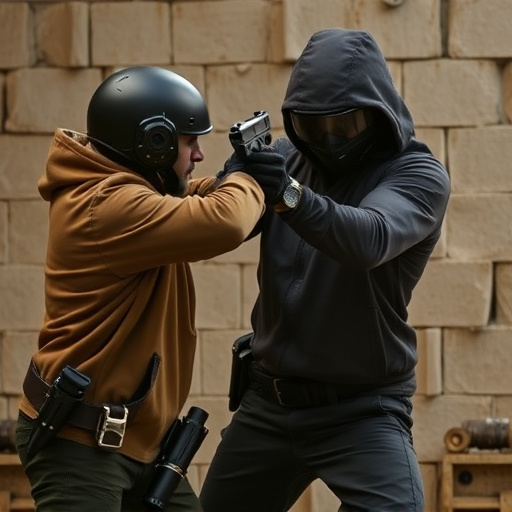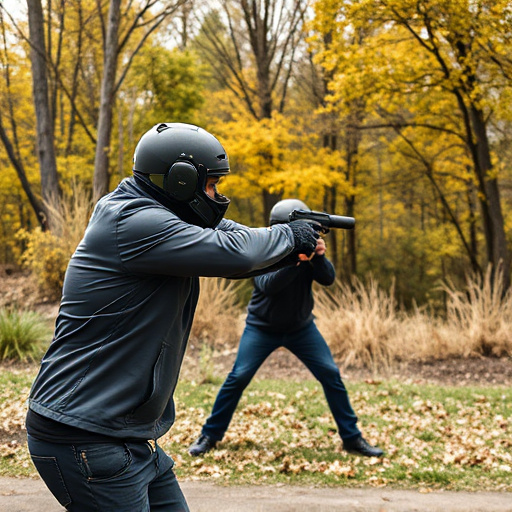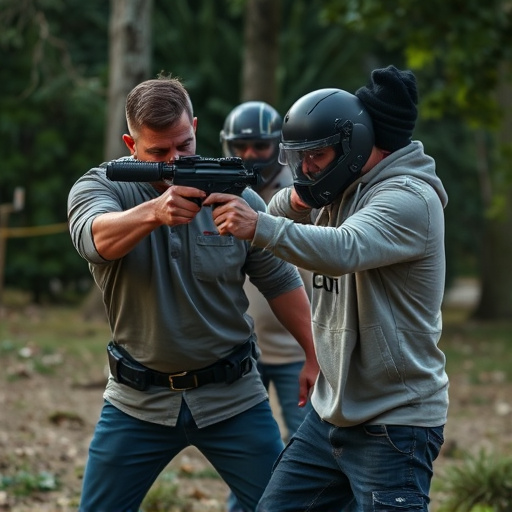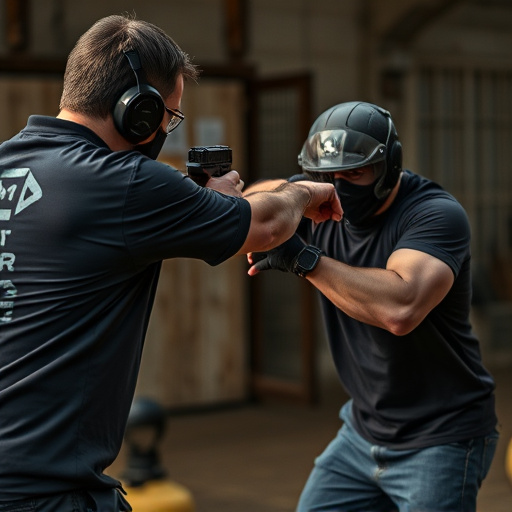Stun guns for beginners should have adjustable voltage settings between 50,000-120,000 volts, prioritizing safety features like trigger locks and switches. Start with lower voltages, gain experience, and understand local laws. Always read manufacturer instructions, aim low towards legs, and maintain proper storage practices to ensure safe use.
Introducing our comprehensive guide to stun gun voltage range safety specs, tailored for beginners seeking self-defense options. From understanding crucial voltage parameters to navigating legal limits, this article demystifies key aspects of stun gun safety. Learn about identifying safe ranges, exploring essential safety features, and mastering proper usage through a step-by-step guide. Additionally, discover maintenance tips and important legal considerations, ensuring you make informed choices when selecting stun guns with built-in safety features for beginners.
- Understanding Stun Gun Voltage: What It Means for Safety
- Identifying Safe Range for Beginners
- Key Safety Features to Look Out For in Stun Guns
- How to Use a Stun Gun Safely: Step-by-Step Guide
- Legal Considerations and Limits on Stun Gun Voltage
- Maintaining and Storage Tips for Optimal Safety
Understanding Stun Gun Voltage: What It Means for Safety

Stun guns are designed to incapacitate an assailant, but understanding their voltage range is crucial for safety, especially for beginners. Voltage is measured in volts and represents the electrical charge delivered by a stun gun when activated. Stun guns with safety features typically range from 50,000 to 120,000 volts, which is high enough to disrupt an attacker’s muscle control but not so high as to cause significant harm.
For beginners, it’s essential to grasp that higher voltage doesn’t always equate to more effectiveness or safety. The right stun gun for you depends on factors like body type and strength of the target, as well as your comfort level with the device. Safety features like trigger locks, safety switches, and LED indicators are vital components to look for in any stun gun to ensure responsible use and minimize risk.
Identifying Safe Range for Beginners

When starting with stun guns, understanding your safe range is paramount for responsible usage and minimizing risks. For beginners, it’s crucial to familiarize yourself with the device’s specifications, especially the voltage range. Most stun guns on the market are designed with safety features that limit the output to a certain voltage, typically between 5,000V to 12,000V. This range is sufficient for deterring most would-be attackers while ensuring the user doesn’t cause any permanent harm by accident.
The safe range varies slightly based on factors like the device’s design and the user’s grip strength. Stun guns with safety features often have an automatic shut-off mechanism to prevent overuse, which can be a valuable tool for beginners learning their effective range. It’s recommended to start at the lower end of the voltage spectrum and gradually increase your comfort level as you gain experience, always remaining within the device’s safe operating limits.
Key Safety Features to Look Out For in Stun Guns

When considering stun guns, especially if you’re a beginner, looking out for specific safety features is paramount to ensure responsible use and mitigate risks. One crucial aspect is the voltage range—a key spec that dictates the device’s effectiveness and potential side effects. Opt for stun guns with adjustable voltage settings, allowing you to customize the level of force according to your needs and local laws. This feature ensures a safer experience, as higher voltages can cause severe pain but also carry more risks if used inappropriately.
Additionally, seek models equipped with safety switches or triggers that require intentional activation. These mechanisms prevent accidental discharges, which can be dangerous in close-quarters encounters. Look for stun guns with durable construction and impact-resistant designs, as these contribute to safer handling and reduce the risk of injury to the user during intense situations. Remember, a stun gun is only as safe as its design and your understanding of its limitations.
How to Use a Stun Gun Safely: Step-by-Step Guide

Using a stun gun safely is paramount, especially for beginners. Here’s a step-by-step guide to ensure responsible deployment:
1. Familiarize Yourself with the Stun Gun: Before your first use, carefully read and understand the manufacturer’s instructions. Look for safety features like an easy-to-access safety switch and a trigger lock. Practice disassembling and reassembling it to get comfortable with its parts.
2. Check Your Surroundings: Ensure you’re in a safe location where using a stun gun is legal and appropriate. Keep your finger off the trigger until you intend to use it, and never point it at anyone unless necessary for self-defense. Always aim low, towards the legs, as this reduces the risk of severe injury and increases the chance of incapacitation.
Legal Considerations and Limits on Stun Gun Voltage

When considering stun guns, understanding legal boundaries and voltage limits is crucial, especially for beginners looking into self-defense options. Each jurisdiction has its own set of regulations regarding stun gun ownership, carry, and use. It’s essential to research and comply with local laws to avoid any legal repercussions. Stun guns are generally categorized based on their voltage output, which ranges from 50,000 to 120,000 volts. However, these devices are not without safety features and limitations; higher voltage doesn’t always mean more effectiveness or power. In fact, excessive voltage may pose additional risks, including accidental discharge and potential harm to the user or bystanders if not handled correctly.
For stun guns with safety features designed for beginners, look out for models that incorporate safeguards such as trigger locks, safe operating procedures, and lower voltage outputs tailored for controlled use. These safety considerations are vital to ensure responsible ownership and minimize risks associated with high-voltage devices. Beginners should also familiarize themselves with de-escalation techniques and local self-defense laws to make informed decisions when selecting a stun gun that suits their needs while adhering to legal limits.
Maintaining and Storage Tips for Optimal Safety

When it comes to stun guns with safety features, proper maintenance and storage are crucial for beginners looking to ensure optimal safety. Always remember to keep your stun gun in a secure location, out of reach of children and unauthorized individuals. Regularly inspect the device for any signs of damage or wear, and clean it according to the manufacturer’s guidelines using a soft cloth and mild soap solution. This helps maintain its functionality and extends its lifespan.
Additionally, ensure that you store your stun gun in a cool, dry place, away from direct sunlight or extreme temperatures. Avoid leaving it in a car, as temperature fluctuations can negatively impact the device’s performance. Keep spare batteries charged and readily available, so you’re never without power when needing to use your stun gun for self-defense purposes. Following these simple maintenance and storage tips will help beginners maintain their stun gun’s safety features and be better prepared in case of an emergency.
When considering a stun gun, prioritizing safety is paramount. By understanding voltage ranges, identifying suitable safe distances, and familiarizing yourself with key safety features, you can effectively protect yourself while minimizing risks. Following our step-by-step guide on usage and staying informed about legal limits ensures responsible ownership. Remember, properly maintained and stored stun guns with built-in safety mechanisms are ideal for beginners seeking personal safety in unexpected situations.
